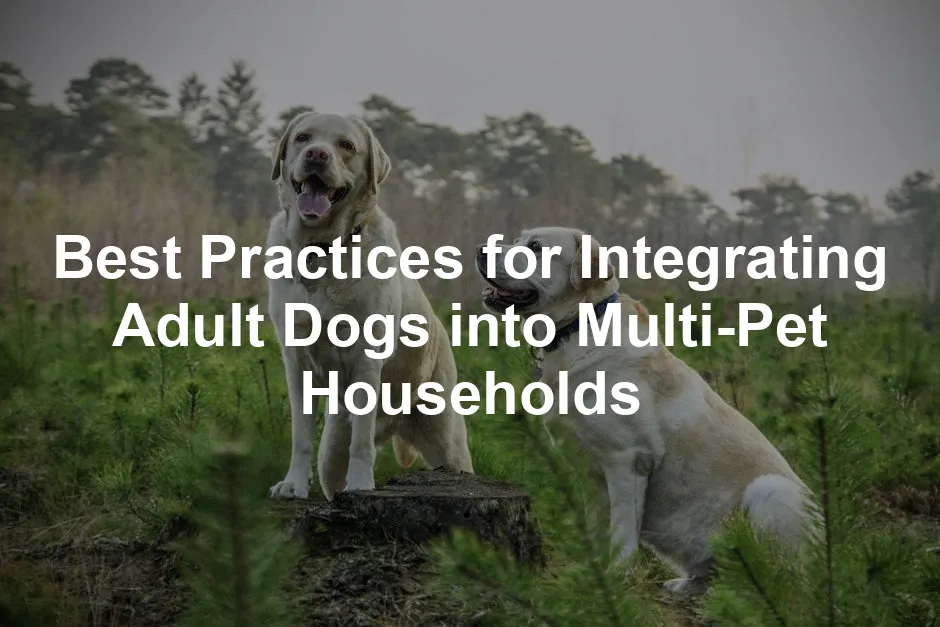Introduction
Integrating a new adult dog into a multi-pet household can feel like juggling flaming torches while riding a unicycle—exciting yet potentially chaotic. The key to a smooth transition lies in understanding each pet’s personality, establishing boundaries, and employing effective introduction strategies. Every pet is unique, just like their preferences. Some may thrive on social interactions while others prefer solitude. With the right approach, you can create a harmonious environment where your furry friends coexist peacefully.
First, take a good look at your current pets. Are they social butterflies or more introverted? Next, create a calm atmosphere. Introducing a new dog should be a joyous occasion, not a wrestling match. Patience is your best friend here. Rushing the process can lead to unnecessary stress, not just for the pets but for you too!
Let’s explore the best practices for making this transition as seamless as possible for everyone involved. From assessing existing pet dynamics to ensuring individual spaces, every step counts. So grab your treats and a comfy spot on the couch; we’re diving into the art of integrating adult dogs into multi-pet households.

Summary
This article outlines essential practices for successfully integrating an adult dog into a multi-pet household. Start by assessing your current pets’ behaviors and temperaments. Understanding how they interact is critical. You want to manage introductions effectively. Creating safe spaces for each pet is crucial. After all, everyone deserves their own corner of peace amid the excitement.
Gradual introductions are key. Don’t expect instant friendships. Watch for signs of stress or aggression; they can sneak up on you. Maintaining daily routines helps too. It provides a sense of normalcy. Individual attention is important; every pet wants to feel special.
Ensure all pets have their own resources, such as food and toys, to prevent conflicts. Sharing is nice, but sometimes it’s just not in the cards. By following these best practices, you can foster a peaceful and loving environment for all your pets, transforming your home into a joyful haven for every furry family member. Consider using a PetSafe Healthy Pet Gravity Feeder to ensure every pet gets their fair share of food without any fuss!
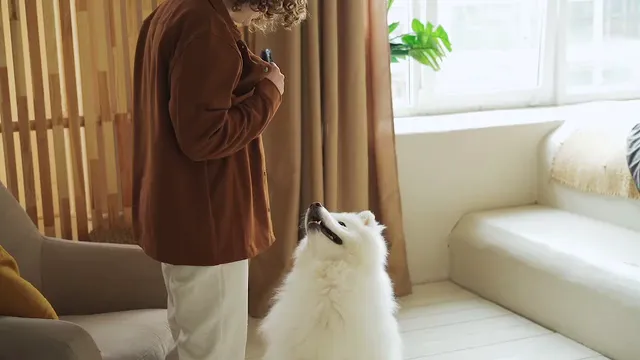
Preparing for the Introduction
Bringing a new adult dog into your multi-pet household is an exciting adventure. However, preparation is key to ensuring a smooth transition. Let’s explore some best practices that will set the stage for success.
Creating Safe Spaces
Individual Retreats: Every pet needs their own sanctuary. Designating individual spaces allows each furry friend to retreat when feeling overwhelmed. Whether it’s a cozy crate, a quiet corner, or a favorite bed, these safe havens can help reduce anxiety. For example, if your resident dog is feeling a bit miffed about the new arrival, having a retreat spot will help them chill out. Remember, it’s not just the new dog that needs a safe space; your existing pets will benefit from having their own areas too. A MidWest Homes for Pets Dog Crate can serve as a perfect retreat for your new furry friend!
Using Baby Gates: Baby gates are your new best friend. They create physical boundaries without isolating your pets completely. By using gates, you can manage interactions and give everyone time to acclimate. You can allow your existing pets to wander around while the new dog gets familiar with the space. This way, no one feels cornered, and it helps prevent any territorial disputes. Plus, a little peek-a-boo action can be quite entertaining for everyone!

Scent and Familiarization Techniques
Scent Swapping: Before the big introduction, let’s play a little game of “who’s that?” Use blankets or items from each pet to introduce their scents to one another. Rubbing a cloth on your existing dog and then letting the new dog sniff it can create a familiarity that eases the transition. This scent exchange can help all pets feel more comfortable. It’s like sending a friendly “hello” before the meet-and-greet!
Environmental Adjustment: Adjusting your home environment is crucial. Start by removing any high-value items, like toys or food bowls, that might trigger competition. Create a calm atmosphere by playing soft music or using calming pheromones. You want to set the stage for a peaceful introduction. This approach helps ensure that when the new dog arrives, it’s not a chaotic free-for-all but a harmonious gathering. Consider enhancing the calmness with PetSafe Pheromone Calming Spray to create a soothing environment!
With these strategies in place, you’re well on your way to a successful introduction. Remember, patience is your ally. Allow your pets the time they need to adjust, and soon, you’ll be on the path to a happy multi-pet household!

The Introduction Process
Now that you’ve prepared your home, it’s time for the introduction process. Each step is designed to foster positive interactions and reduce stress for your pets.
Initial Meeting
Choosing a Neutral Location: The first meeting should happen in a neutral area. This could be a park or a friend’s yard—anywhere that doesn’t belong to your existing pets. The idea is to minimize territorial instincts. Let the dogs explore the area together, allowing them to sniff and get acquainted without pressure. This relaxed setting helps keep things calm. After all, nobody wants a first date that feels like a duel!
Leash Management: Keep the new dog on a leash during the initial meeting. This gives you control while allowing the dogs to interact safely. A loose leash offers freedom, but tight leashes can create tension. If one dog starts to act aggressively, calmly separate them without yelling or jerking on the leash. This ensures that both dogs associate the meeting with positive experiences rather than stress.
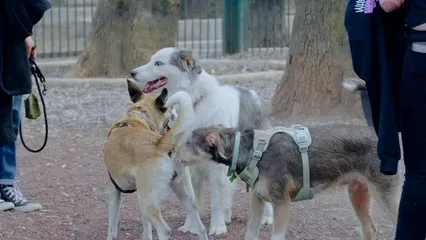
Gradual Interaction
Short Meetings: Keep those first interactions short and sweet. A few minutes is enough for them to say “hi” before separating them again. Gradually increase the duration of these meetings as they become more comfortable. This slow approach helps prevent overwhelming either dog and fosters positive associations with each other’s presence.
Monitoring Behavior: Watch closely for any signs of stress or aggression. This could include growling, barking, or even a stiff body posture. If you notice these signals, it’s time to step back. Separate the dogs and try again later. It’s crucial to ensure that the introduction process is gentle and positive. A little monitoring goes a long way in building a peaceful multi-pet household.
By taking these steps, you’ll help your new dog integrate smoothly into your family. Stay patient, positive, and attentive, and you’ll pave the way for a loving and harmonious environment for all your furry friends.
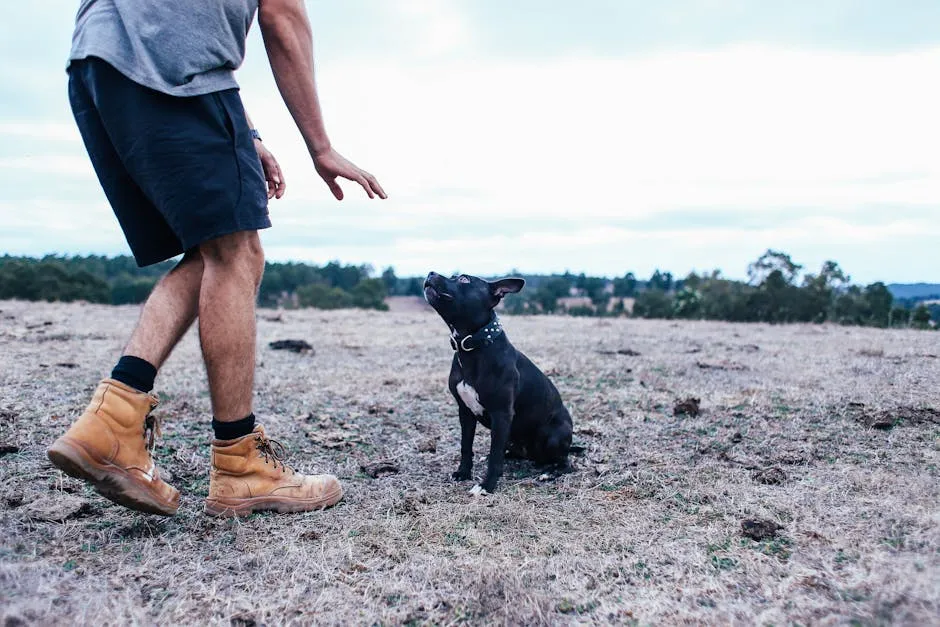
Managing Daily Life with Multiple Pets
Integrating an adult dog into a multi-pet household includes not only smooth introductions but also day-to-day management. This ensures harmony among your furry friends. Let’s break it down into feeding, resource management, playtime, and exercise.
Feeding and Resource Management
Separate Feeding Areas: Establish designated feeding spots for each pet. This simple tactic minimizes food aggression and resource guarding. Dogs can be possessive over their chow, just like we are over our pizza slices! By keeping food bowls apart, you reduce competition. Each pet can enjoy their meal without feeling threatened. Use baby gates to manage access if needed. A PetFusion Ultimate Dog Bed can provide a comfy spot for your dog to enjoy their meals in peace!
Providing Equal Attention: Make sure every pet feels loved and valued. It’s easy for jealousy to sneak in when one pet gets all the attention. Schedule individual playtime and cuddle sessions with each pet. This helps everyone feel included in the family unit. Think of it as a daily dose of “me time” for your pets, ensuring they all feel special.

Playtime and Exercise
Supervised Play: When your pets play together, supervision is crucial. Keep an eye on their interactions to prevent roughhousing. Sometimes, playful antics can escalate into squabbles faster than a flip of a tail. If you notice any signs of stress, intervene calmly. Redirect their focus with toys or treats. Consider using a KONG Classic Dog Toy to keep them entertained!
Exercise Routines: Create a balanced exercise routine that meets all pets’ needs. Dogs need walks and playtime, while cats benefit from interactive toys and climbing opportunities. Consider incorporating group activities, like a game of fetch, to get everyone involved. Remember, a well-exercised dog is less likely to pester the cat, and a happy cat won’t feel threatened. An Outward Hound Dog Life Jacket can also make water play safe and fun!
By managing daily life effectively, you create a peaceful multi-pet household where everyone thrives. It’s all about balance, attention, and a sprinkle of supervision. With these strategies in place, you’re on your way to a happy, harmonious home!

When Things Don’t Go as Planned
Recognizing Incompatibility
Sometimes, despite your best efforts, pets just don’t click. It’s like trying to match a cat with a vacuum cleaner—some things are just not meant to be! If your new adult dog shows persistent signs of aggression towards your existing pets, it’s crucial to recognize the signs of incompatibility early. Look for alarming behaviors such as growling, snapping, or even excessive barking. If your other pets are constantly on edge or seem stressed whenever the new dog is around, that’s a red flag waving in your face!
Incompatibility can stem from various factors. For instance, past traumas or different socialization experiences may lead to negative interactions. Consider the personalities at play. A timid dog may feel threatened by a more dominant one, leading to a cycle of stress and fear. If these behaviors persist despite your attempts to facilitate interactions, it might be time to face the music. This is particularly important for the emotional well-being of all pets involved.

Seeking Professional Help
When the situation escalates, don’t hesitate to seek help! Professional trainers or animal behaviorists can provide invaluable insights tailored to your unique scenario. A trainer can assess the dynamics between your pets and suggest actionable strategies to improve their relationships. Sometimes, all it takes is a fresh perspective to turn things around.
Consulting a behaviorist is especially wise if aggression persists. They can help identify triggers and develop a customized action plan. This might include structured training sessions or gradual desensitization techniques. Remember, you’re not alone in this journey—many pet owners face similar challenges. Seeking professional guidance isn’t a sign of failure; it’s a proactive step towards creating a peaceful home.
Don’t shy away from asking for help. After all, a harmonious household is the ultimate goal. By recognizing incompatibility and actively seeking professional assistance, you can pave the way for a happier home for everyone involved.
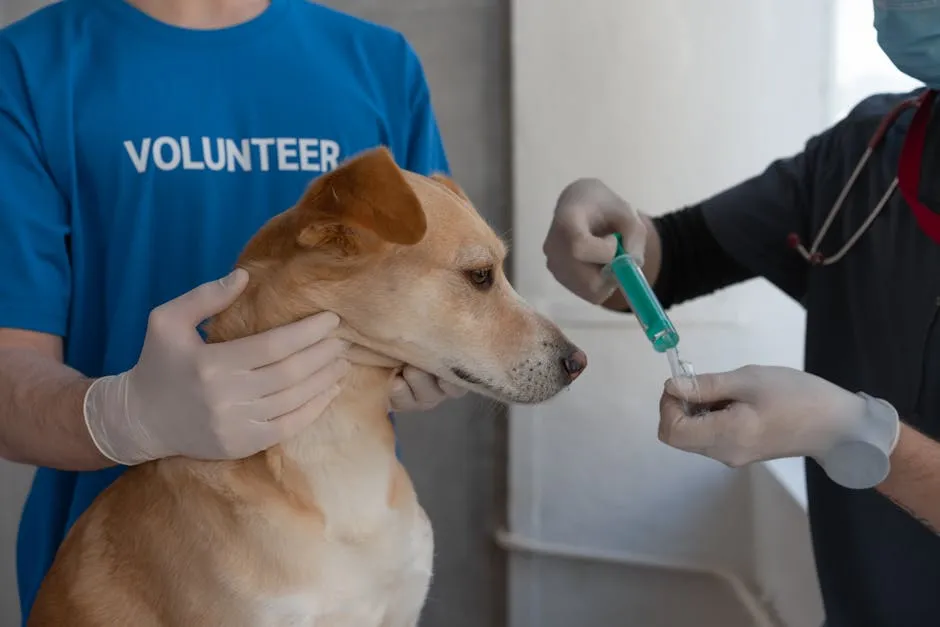
Conclusion
Integrating a new adult dog into a multi-pet household requires patience, understanding, and a strategic approach. By following the outlined best practices, pet owners can foster positive relationships among their pets, ensuring a peaceful and loving environment. Each pet is unique, and what works for one may not work for another. With time and commitment, your multi-pet household can thrive. Embrace the quirks of each pet and celebrate the small victories along the way. Your furry family members will thank you for it! Don’t forget to stock up on essentials like Earth Rated Dog Poop Bags to keep your walks clean and easy!
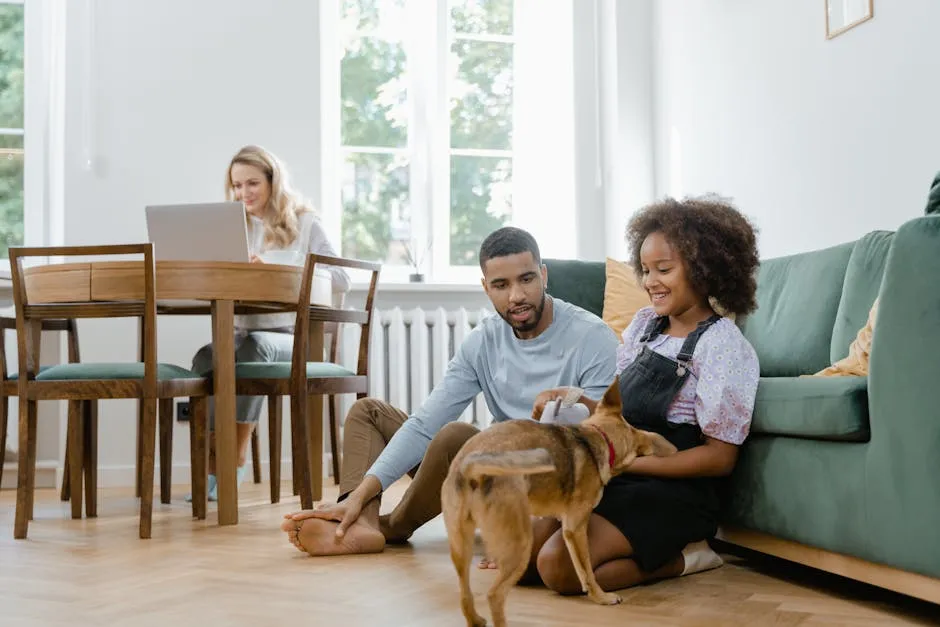
FAQs
How long does it typically take for new pets to get along?
The timeline for pets to bond varies widely. Some pets become buddies in just a few days. Others may take several weeks or even months. Factors influencing this include age, temperament, and past experiences. For instance, a young, playful dog might adapt quickly to an older, laid-back pet. However, a shy cat meeting an enthusiastic puppy may need extra time. Patience is your best friend here. Monitor their interactions closely, allowing for gradual acclimation. Remember, every pet is unique, so set realistic expectations!
What should I do if my new dog shows aggression towards my other pets?
Aggression is a serious issue that needs immediate attention. First, separate the pets to prevent injuries. Create safe spaces where each pet can relax away from the other. Gradual reintroductions are key. Start by allowing them to sniff each other’s belongings. After a few days or weeks, try short, supervised meetings. Use positive reinforcement, like treats or praise, to reward calm behavior. If aggression persists, consider consulting a professional trainer or behaviorist. They can help create a tailored plan for your situation.
Can older dogs and younger pets coexist peacefully?
Yes, older dogs and younger pets can live together harmoniously! However, compatibility depends on individual personalities. An older dog, especially one with a calm demeanor, may enjoy the playful antics of a puppy. Yet, if the older dog has health issues or is easily stressed, this dynamic can become challenging. Always supervise their interactions and provide safe spaces. Gradual introductions can help ease tensions. With patience and proper management, you can foster a loving environment for pets of all ages.
How can I tell if my pets are adjusting well?
Monitoring your pets’ behaviors is crucial to gauge their adjustment. Positive signs include playful interactions, relaxed body language, and peaceful coexistence in shared spaces. If they’re comfortable enough to nap near each other, that’s a good indication! On the flip side, watch for signs of stress, like growling, hissing, or excessive hiding. If one pet appears anxious or aggressive, it may be a sign that they need more time or space. Keeping a close eye on their interactions will help you ensure a harmonious household.
What if the integration doesn’t work out?
Not every integration is successful, and that’s okay. If your pets can’t get along despite your best efforts, consider rehoming options. This decision can be tough but may be necessary for everyone’s well-being. Reach out to local shelters or rescue organizations for assistance. They can help find a suitable home for your pet without making you feel guilty. Always prioritize the emotional health of your pets. Seeking expert advice can provide additional strategies for managing the situation. Remember, sometimes a fresh start is the best path forward.
Please let us know what you think about our content by leaving a comment down below!
Thank you for reading till here 🙂
All images from Pexels

